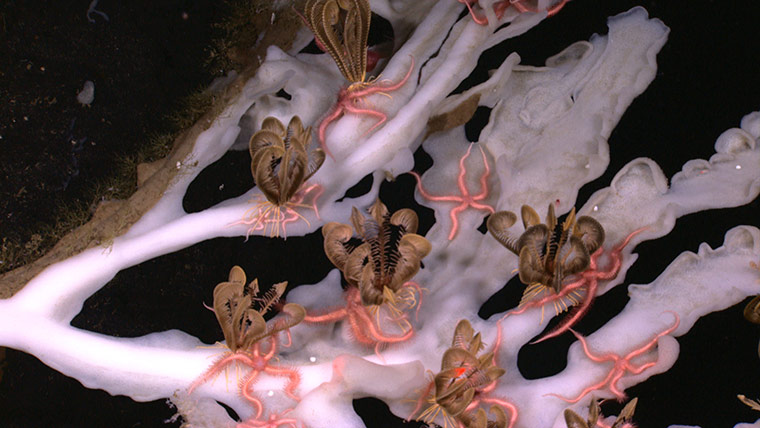TOP STORIES
 Bird die-off disease strain identified
Bird die-off disease strain identified A virulent strain of Newcastle Disease is responsible for the death of nearly 1,000 gulls and 500 cormorants in Minnesota this summer.
The specific strain of Newcastle Disease was confirmed this week by the National Wildlife Health Center in Madison, Wis.
. . . Cormorant and gull die-off occurred earlier this summer on Marsh Lake in Big Stone County and Wells Lake in Rice County and in recent days sick and dead cormorants have been discovered at Leech Lake in Cass County.
Minnesota Department of Natural Resources - news.dnr.state.mn.us
26 Aug 2010
Location: Minnesota, USA - Marsh Lake - Map It  ; Wells Lake - Map It
; Wells Lake - Map It  ; Leech Lake - Map It
; Leech Lake - Map It 
 ; Wells Lake - Map It
; Wells Lake - Map It  ; Leech Lake - Map It
; Leech Lake - Map It 
 Mumbai oil spill: threat to marine life, coast
Mumbai oil spill: threat to marine life, coast . . . Initial observations by non-profit Bombay Natural History Society (bnhs), conducting its own ecological assessment study, indicate the slick has spread to the beaches in Alibaug in Raigad, 108 km from Mumbai.
. . . Ecologists said the picture is grim. "The oil spill will affect fish species; many of them breed in mangroves. The chemicals sprayed to disperse the oil too would affect the marine ecology," said B F Chhapgar, a marine biologist.
. . . Chhapgar also expressed concern over the threat posed by the chemical containers still afloat in the sea. If the pesticides leak, marine animals would be severely impacted, he said.
Down To Earth - www.downtoearth.org.in
R Jathar
27 Aug 2010
Photo credit: R Menon
 Deadly fish disease arrives in Welwyn Hatfield
Deadly fish disease arrives in Welwyn HatfieldThe ban was imposed by the Environment Agency, after a number of carp were found dead in a section of the River Lea which winds through the Brocket Hall estate in Lemsford.
Tests later established that they had died from Koi Herpesvirus, a highly contagious piscatorial disease for which there is no cure.
Welwyn Hatfield Times
C Richards
26 Aug 2010
Photo courtesy of Welwyn Hatfield Times
Location: Lemsford, England - Map It 

More Fish News
 Deadly Bat Fungus Found in Several European Countries
Deadly Bat Fungus Found in Several European CountriesWithin five years the death toll of North American bats succumbing to "white-nose syndrome" has reached the one million threshold.
Now, the causative fungus Geomyces destructans has been identified in a number of European countries -- so far without detrimental effects for the native bat populations.
This is one of the most important results of a collaborative study by researchers from Germany, Switzerland, Hungary and the United Kingdom coordinated and carried out by the Leibniz Institute for Zoo and Wildlife Research (IZW) in Berlin, Germany. Will these findings help to tackle one of the major crises in nature conservation?
Science Daily - www.sciencedaily.com
26 Aug 2010
Photo credit: A Kiefer/NABU Rheinland-Pfalz
Journal Article Cited
Reported Wildlife Mortality Events to the USGS National Wildlife Health Center Updated
USGS and a network of partners across the country work on documenting wildlife mortality events in order to provide timely and accurate information on locations, species and causes of death. This information was updated on August 25, 2010 on the USGS National Wildlife Health Center web page, New and Ongoing Wildlife Mortality Events Nationwide. Quarterly Mortality Reports are also available from this page. These reports go back to 1995.
USGS National Wildlife Health Center
27 Aug 2010
Area: United States
OTHER WILDLIFE HEALTH RELATED NEWS
Photo courtesy of NOAA Ocean Explorer
- The week in wildlife [image gallery]
- Plague outbreak prompts campground closure [Plumas-Eureka State Park, California, USA - Map It
 ]
] - Algae outbreak infests Sodus Bay [Sodus Bay, New York, USA - Map It
 ]
] - Whale in guarded condition, providing valuable research [Kihei, Hawaii, USA - Map It
 ]
] - Clues found in North Norfolk seal death mystery [England - Blakeney - Map It
 ; Morston - Map It
; Morston - Map It  ; Wells - Map It
; Wells - Map It  ]
] - 2 of 9 trapped dolphins rescued in Bolivia river
- Serengeti highway protests growing worldwide [Tanzania}
- Wild Southeast Asian Porcupines Under Threat Due to Illegal Hunting, Researchers Find
- Acidifying Oceans Spell Bleak Marine Biological Future 'by End of Century', Mediterranean Research Finds

Gulf Oil Spill




